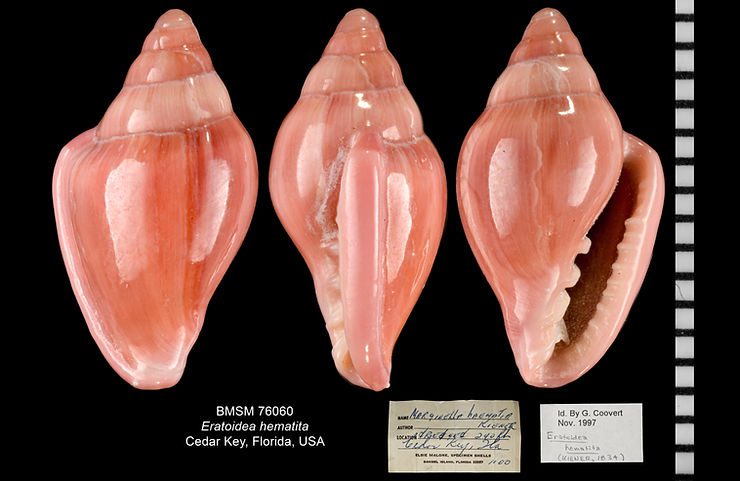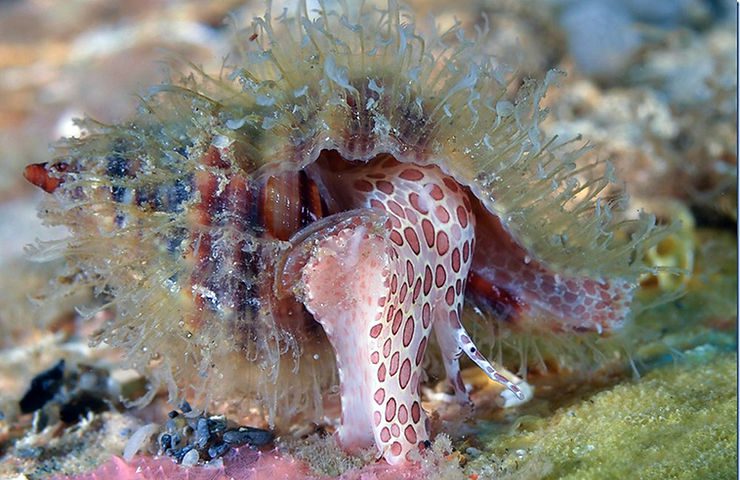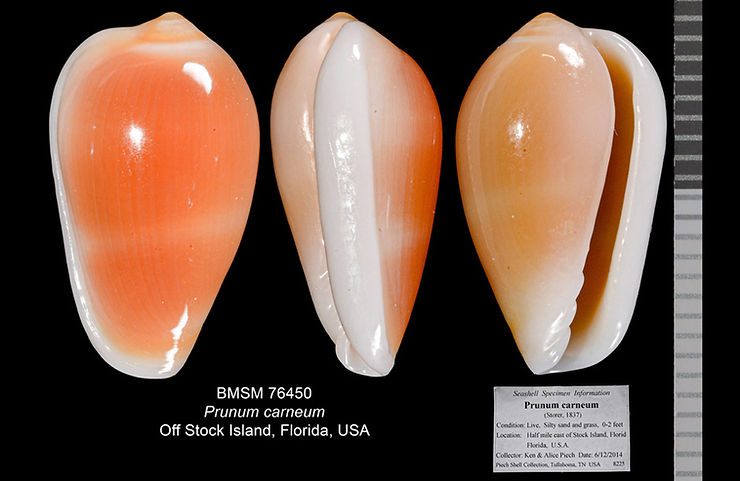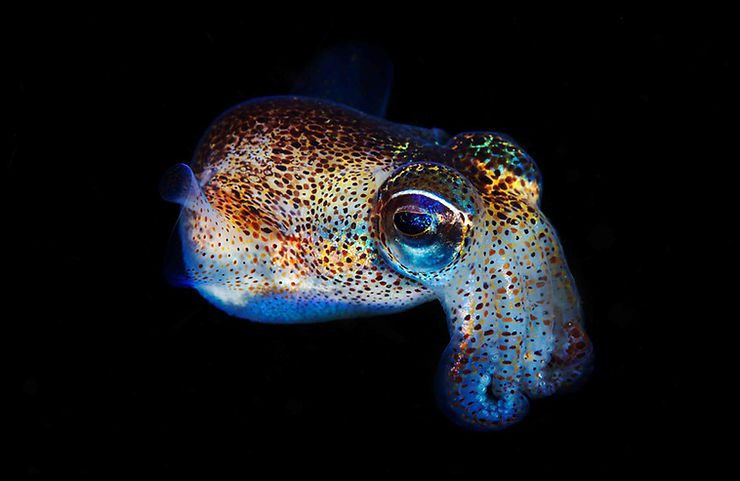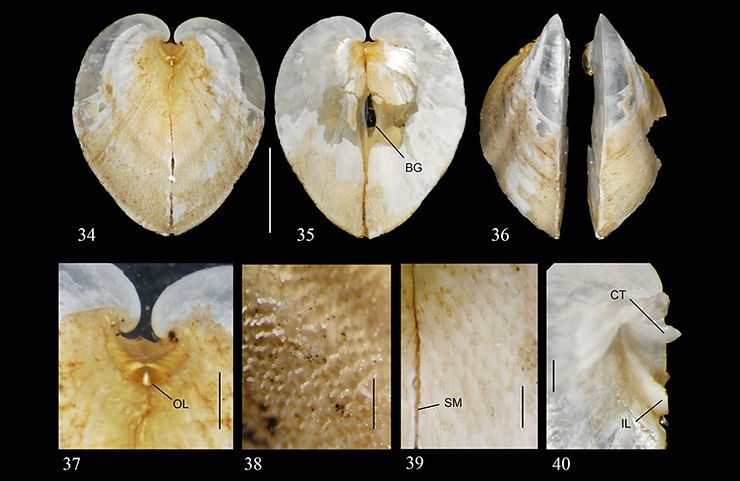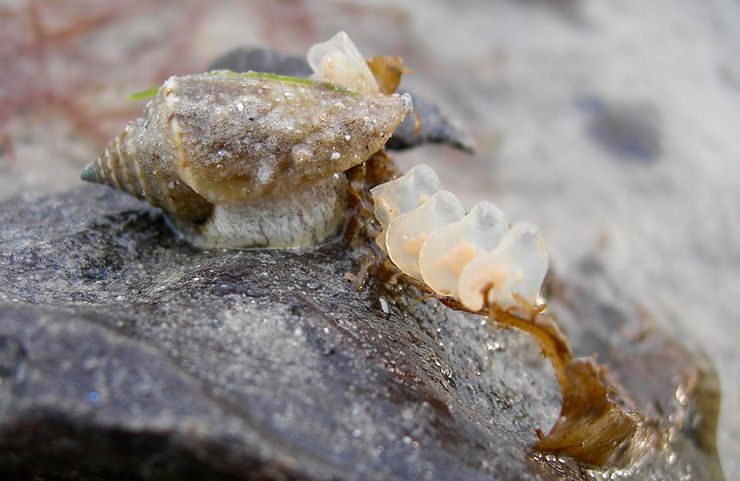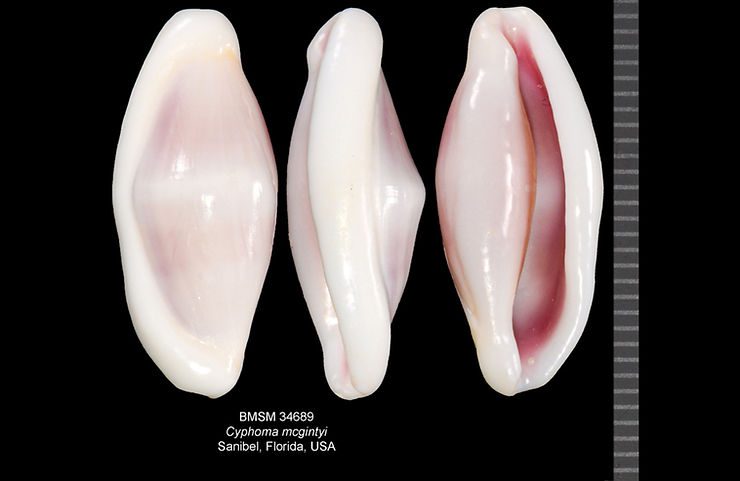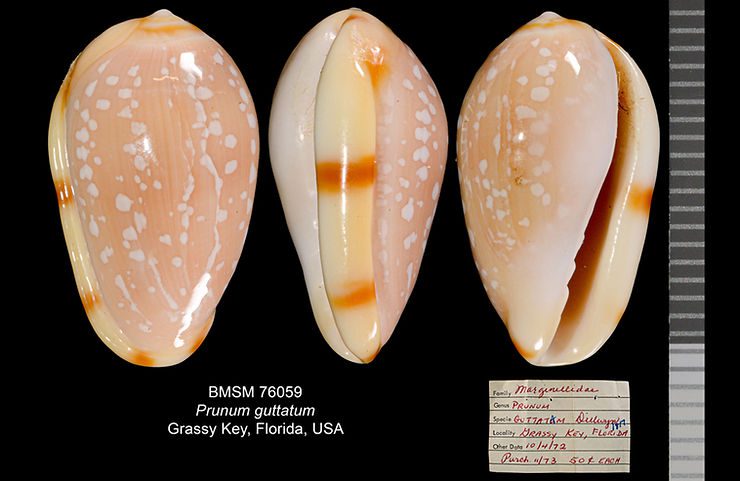
Shell of the Week: The White-spot Marginella
Prunum guttatum (Dillwyn, 1817) reaches 26 mm (about one inch). It has a smooth, glossy shell, with a typical color pattern of irregular white spots set against a background of three faint, tan-colored spiral bands. The species is found from the coast of Southeast Florida to the lower Caribbean. (A large reproduction of this illustration is displayed in the In Focus exhibition at the National Shell Museum.)
